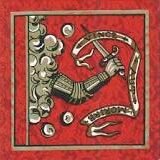WHAT IS EXPENSIVE?
[ad_1]

❝I spent a lot of money on booze, birds, and fast cars. The rest I just squandered.❞
-George Best
Imagine your plane had a late takeoff, and you’ve got a connection time in Chicago. You thought you had a couple of hours to stretch your legs and grab a bite to eat before getting on the final leg of your flight. But now you are barely going to make that flight. Yet you’re still hungry, so you jump into one of the shops where sandwiches are available. You find one that looks good (or, at least, good enough…it is airport food, after all), and on your way up to the cashier, take a look at the price tag and it is twenty-one dollars!
The question is, do you buy the sandwich, or is it too expensive?
EXPENSIVE
The word expensive, of course, can mean many different things. Though many people never consider what they mean when they use the term, the different ways it can be used. First, it can be used in a way that represents absolute dollars. Above some arbitrary number would be considered expensive, and below, perhaps a different arbitrary number, would be something that is considered cheap.
Imagine having to spend $5,000 on something. At first glance, this may seem to be an expensive purchase.

Conversely, imagine having to pay $10 for something. Ten dollars might be cheap – you might even have it in last year’s jacket pocket.

And yet, using an absolute dollar value doesn’t quite cut it, does it? Let’s go back to that $5,000 example. Imagine you’re buying a brand-new car. With this new information, $5,000 actually seems quite cheap.

It’s the same with our $10 example. Imagine going to buy your favorite candy bar and being charged $10. Now, all of a sudden, ten dollars seems quite expensive.

Now that I’ve introduced the possibility of comparing the price to a particular product (like $5,000 for a truck and $10 for a candy bar), we might try to define expensive in terms of how much something costs relative to what it “should” cause.
So if our candy bar is “supposed to” cost $1, then $10 is well above what it “should” cost and, therefore, would be considered expensive.

The flip side is true, too. If a car is “supposed to” cost $20,000, $30,000, or more, the price is below what it “should” cost.

But now we are stuck with a dilemma. How much “should” something cost? You might use in average cost, but with inflation, prices go up over time. You might use the cost you’re used to seeing, but this is just a value judgment.
So maybe we consider how expensive something is relative to how much you have. If something, anything, costs $10,000, people like Elon Musk or Jeff Bezos may consider this inexpensive because it is a fraction of their income and even a smaller fraction of their net worth. A more relatable way to think about this is to think about things that you used to consider expensive when, say, you were a broke college kid, but now you buy without even thinking about, like rent, groceries, or even gas.

That second example works because when you were in college, you didn’t have much (if you’re like most people). Ten thousand dollars, something Elon Musk may consider inexpensive, is very expensive to most of us because $10,000 may represent 15% or more of our income.

IT DEPENDS
However we decide to define expensive, we’ve left out one important piece from our consideration. That is how much something is worth to us. Just because $10,000 is a fraction of Elon Musk’s net worth doesn’t mean he would consider a $10,000 dinner cheap. Similarly, somebody making $65,000 per year doesn’t necessarily think a $10,000 car is expensive just because it’s a significant percentage of their income.
An important consideration is how much you value whatever it is you’re considering. Whether you know it or not, you assign a value to it.

And you and I will assign different values to different things. I may put a high value on a camping trailer you think is worthless. I might not value an all-inclusive vacation on the beach as much as you might.

Then you can add in a third person, and all of a sudden, we see that the same thing has many different values to many different people.

We all value things differently because we all value different things. That is, we all have different personal values. Your personal values are the lens through which you see what does and does not have value. These are shaped through your experiences, including your family, culture, state, city, neighborhood in which you grew up, religious affiliations, and so on.

And it’s no surprise that since everybody has a different upbringing, everybody will have different values. These values inform how much something is worth to us, and what it’s worth to us is called its intrinsic value.

INTRINSIC VALUE
The answer to the question of what it means to be expensive, then, comes down to how much something costs relative to our willingness to pay (although it should be noted that our ability to pay factors into this as well).
If you are willing to pay $6,000 for something, like a camping trailer, then $10,000 is expensive. And, of course, if you are willing to pay nothing for a camping trailer because you can think of anything worse, then $10,000 is not only expensive, it’s absurd.

On the other hand, if I’m willing to pay $20,000 for a camping trailer, then $10,000 is quite cheap.

And so we have situations where the price is the price, but everybody has a different willingness and ability to pay. You might be willing to pay a lot of money to go to a Disney resort and happily pay the price because the price is less than what you would be willing to pay. I, on the other hand, can think of very few things I would enjoy less than a trip to Disney.

So, whereas I look at a trip to Disney as being really expensive, you might look at the same trip for the same amount and say that it’s a bargain.

WHAT YOU PAY FOR
What do you get with your trip to Disney? And what do I get with my camping trailer? There’s one element that we haven’t yet discussed, and that’s understanding what we are paying for. In other words, it’s important to look at what we actually get for our money.
Take the often-picked-on purchase of lattes. Many personal finance writers will tell you that buying a latte daily is very expensive and a waste of money. But what are you buying when you buy a latte?

If the only thing you are buying when you buy a latte is a hit of caffeine, then I am likely to agree that this is an expensive way to get a caffeine fix. But that’s not the only reason people buy lattes. True, one element is a caffeinated beverage. What else do people buy lattes for? Some people spend money at the coffee shop because they need a place to work or study. Some people get coffee as a way to socialize. Sometimes people need a break from work. I’ve stopped at a coffee shop to kill time before an appointment.
There are many reasons we buy what we buy. It’s helpful to parse your decision in two different areas to understand what you are buying and how much you’re paying for each of those elements.

For example, I might buy a pickup truck. It’s hard to determine whether or not the pickup truck is expensive without knowing the reason I’m buying the pickup truck. One reason for buying the truck is because I need transportation. I can get transportation by buying an old beater car. So the next element is reliable transportation. I don’t want to break down on the road or not have my car start. Next, I may be able to find reliable transportation in something that’s too small for me or something that doesn’t feel right when I sit in it. So the next element might be reliable transportation that is comfortable. Now, I could get reliable transportation is comfortable in the form of a nice car, but I need to tow this camping trailer we’ve been talking about, so the ability to tow is something else I’m willing to pay for. I also need to be able to haul things. The final reason we buy something I sometimes call the X factor. This can be many things, but it’s often status. Why might you get an Infinity when you could’ve gotten a very similar Nissan, for example? Recognizing what this X factor is shines a light on how much you are paying for the X factor.

You might even consider lining up each element of what you’re buying to see how much you pay for each element. For example, if I paid $50,000 for a truck, I could find out how much it costs to get basic transportation, and I might find a beater car for $1,000. Therefore I’m paying $1,000 for transportation and $49,000 for something else. The next element is reliability. Maybe I can find a reliable car for $15,000. Now, in this case I’m paying $1,000 for the transportation, $14,000 for reliability and $35,000 for something else.
I can do this all the way up the line until I run out of elements. Then, the remainder is the X factor.

None of this is meant to force you to do anything or elicit any judgment. It’s simply an awareness tool to help you see how much you pay for various elements. It allows you to see the relative expansiveness of the element rather than the entire purchase itself.
In the example above, I was paying $10,000 for comfort. I can then ask how much I am willing to pay for comfort. Therefore, I can simply ask myself, “Is this worth it?” Am I willing to pay $10,000 for comfort, or can I get by with something less comfortable?

Again, none of this is meant to induce judgment, even the status element, or the X factor. If I can find a truck to tow my camping trailer for $45,000, but I’m going with one that costs $50,000, I can ask myself what else I am getting for $5,000, and that is the X factor; the status factor. All I’m trying to do here is make sure I understand how much I’m paying and what I am paying for. It’s okay to pay $5,000 for status as long as you know that’s what you’re doing, and that is something you’re willing (and able) to pay for.

By understanding more about what we’re buying and why we’re buying it, we can understand how much we are willing to pay to satisfy our needs and values.
Sometimes, a $21 sandwich is worth it if you are willing to pay $5 for a sandwich and $16 to not go hungry.
You get one life; live intentionally.

Subscribe to Meaningful Money
Thanks for reading. If you found value in this article, consider subscribing. Each week I send out a new post with personal stories and simple drawings. It’s free, and there’s no spam.
If you know someone else who would benefit from reading this, please share it with them. Spread the word, if you think there’s a word to spread.




















